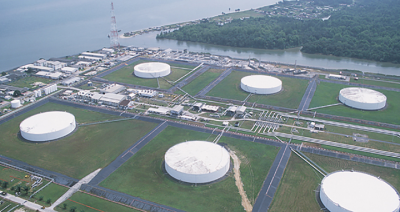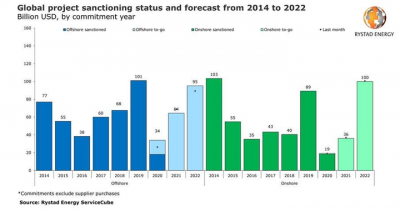Interior Secretary Deb Haaland confirmed May 19 that the proposed rule for a new 5-year offshore oil and gas leasing program will be issued by June 30.
Haaland, at a hearing of the Senate Energy and Natural Resources Committee, could not give a firm timeline to the next offshore lease sales and did not seem to know how to explain the system.
A 5-year plan for offshore leasing involves a draft proposed rule, then a proposed rule, then a final rule. Interior Deputy Secretary Tommy Beaudreau told skeptical senators at the hearing that Interior was treating a draft proposed rule issued by the Trump administration as step one, rather than redoing that step in the Biden administration.
Step 2, the proposed rule, will narrow the options for leasing if it follows standard practice, and it will be accompanied by a proposed programmatic environmental impact statement (EIS). Then will follow a 90-day public comment period, after which, Haaland said, a final rule can be issued along with a final EIS, to be followed by a 60-day comment period.
Haaland did not explain that months can go by as Interior analyzes and responds to the comments it received on the proposed rule, and that an uncertain amount of time can pass between the final rule and the first lease sales.
She did say, “I don’t think there is an actual deadline.”
“The practical effect of this is that it is unlikely there will be offshore lease sales before the end of 2023,” said Frank Macchiarola, senior vice-president of policy, economics, and regulatory affairs at the American Petroleum Institute, in a statement issued after the hearing. “This is one more example of the disconnect between the administration’s political rhetoric and policy reality.”
Onshore issues
Sen. Joe Manchin (D-W.Va.), chairman of the committee, repeatedly asked Haaland whether the Biden administration did, in fact, intend to issue more leases. Haaland insisted that leasing would occur.
Sen. John Barrasso (R-Wyo.) criticized the onshore leasing plans announced in April under authority of the Bureau of Land Management (BLM). The federal royalty rate will be much higher, at 18.75% rather than the previous standard of 12.5%, and the acreage offered is 80% less than previously nominated acreage.
Barrasso said producers have told him the parcels offered in that state are not very attractive as oil and gas prospects and are not near existing infrastructure.
“The producers in Wyoming are telling me that the best parcels have been taken off the table,” Barrasso said.
Wyoming, where BLM will offer 129 parcels for leasing, is scheduled to hold those lease sales June 21-22. That is a relatively large number compared to some other states.
For Montana and North Dakota together, 23 parcels will be offered. In Colorado, nine parcels will be offered, and in New Mexico and Oklahoma together, six parcels will go on sale.
Several other states will see some action, with the lease sale dates typically in mid to late June
One split between senators showed up clearly when Manchin expressed support for the idea of higher federal royalties and fees for oil and gas production on federal lands, while Barrasso referred to such higher costs as part of a pattern of obstruction aimed at the US oil and gas industry.
Manchin did add, however, that if royalties and fees are to rise toward the levels many states charge, the federal government also should adopt more expeditious regulatory procedures, as states generally do.







